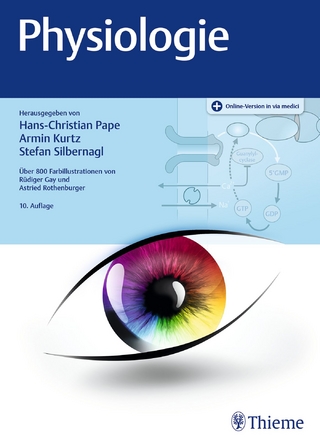
Heart and Emotion
Hogrefe & Huber (Verlag)
978-0-88937-286-3 (ISBN)
- Titel ist leider vergriffen;
keine Neuauflage - Artikel merken
Table of Contents Definitions and models Emotion * A look at emotion research * Methods in emotion research * Evolutionary aspects * Concepts related to emotion * Motivation * Stress * Work load: Theoretical background * Total work load * Physical work load * Emotional work load * Mental work load * Summary Basic physiological principles Nervous control of the heart * Parasympathetic fibers (nervus vagus) * Sympathetic nerves * Central control of the cardiovascular and respiratory systems * Afferent fibers in the ANS * Epinephrine and norepinephrine from the adrenal medulla * Neurophysiology of emotion * Summary Methods Freiburg Monitoring System (FMS) * Apparatus * ECG leads * Physical activity * On-line analysis of additional heart rate (AHR) * Other ECG parameters * Heart rate variability (MSSD) * P-wave amplitude * ST-segment amplitude and ischemic episodes * Assessment of behavior and subjective state * Baseline * Data analysis * Samples monitored with the FMS * Patients * Healthy subjects * Reliability of the FMS * Short-term reliability * Long-term reliability (stability coefficients) * Validity of the FMS * Within-subject correlations * Induction of emotional arousal in laboratory experiments * Funny and erotic movies * "The silence of the lambs" * Testing hypotheses of expected differences between segments * Daytime versus nighttime * Sitting versus standing versus walking * Working time versus leisure time * Staying at school/university versus staying at home * Social contacts with peers versus social contacts with strangers * High versus low TV consumption * Special aspects of AHR * Distribution * Age dependency of AHR * AHR: Emotional or mental work load? * Reaction time paradigm * Reciting a neutral text or discussing an emotional theme * Discussion * Summary Interoception Some findings from the literature * Cardiac perception in healthy subjects * Perception of AHR in healthy subjects * The influence of cognitive schemas on perception * Cardiac perception in patients * Perception of AHR in patients * Asymptomatic and symptomatic myocardial infarction * Discussion of the AMI and SMI results * Emotional arousal, ischemic episodes, and angina pectoris * Interoception in patients with cardiac neurosis and controls * Discussion * Summary Perception of emotions Frequency and quality of emotions * Emotional differences between true and random feedbacks and for different social contacts * Physiological profiles of different emotions * Accuracy of the perception of emotional arousal * Influence of personality dimensions on emotions reported * Discussion * Summary Stress and strain at the workplace Work load in train drivers, bus drivers, and dispatchers * Work load in train drivers * Work load in bus drivers * Work load in dispatchers * Work load in white and blue collar workers * Work load in university students * First study * Replication study * Work load in schoolboys * Discussion * Train drivers, bus drivers, and dispatchers * White and blue collar workers * University students * Schoolboys * Summary Stress and strain during leisure time Work versus leisure time in train drivers, bus drivers, and dispatchers * Work versus leisure time in white and blue collar workers * Effects of television viewing in schoolboys * Driving a car * White and blue collar workers * Male university students * Stress at the amusement park * Discussion * Summary Physiological monitoring during the night Hypotheses * Results * Discussion * Summary General discussion Methodological considerations * Interoception and emotions * Stress and strain * Stress at the workplace * Stress during leisure time * Monitoring during sleep * Conclusions Summary * References * Authors index * Subject index
| Zusatzinfo | 33 tables, 121 figures |
|---|---|
| Verlagsort | Toronto |
| Sprache | englisch |
| Maße | 153 x 229 mm |
| Einbandart | gebunden |
| Themenwelt | Geisteswissenschaften ► Psychologie ► Psychoanalyse / Tiefenpsychologie |
| Geisteswissenschaften ► Psychologie ► Sozialpsychologie | |
| Studium ► 1. Studienabschnitt (Vorklinik) ► Physiologie | |
| ISBN-10 | 0-88937-286-1 / 0889372861 |
| ISBN-13 | 978-0-88937-286-3 / 9780889372863 |
| Zustand | Neuware |
| Haben Sie eine Frage zum Produkt? |
aus dem Bereich


